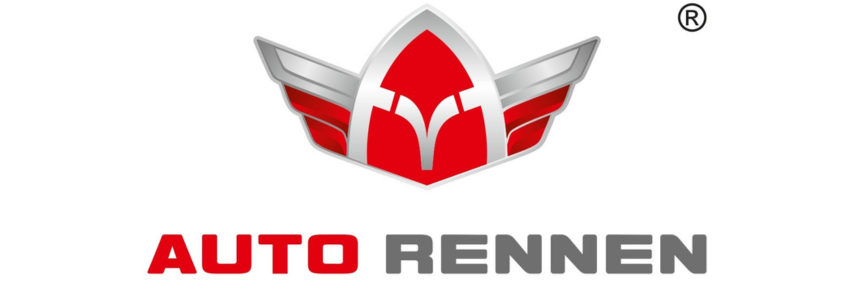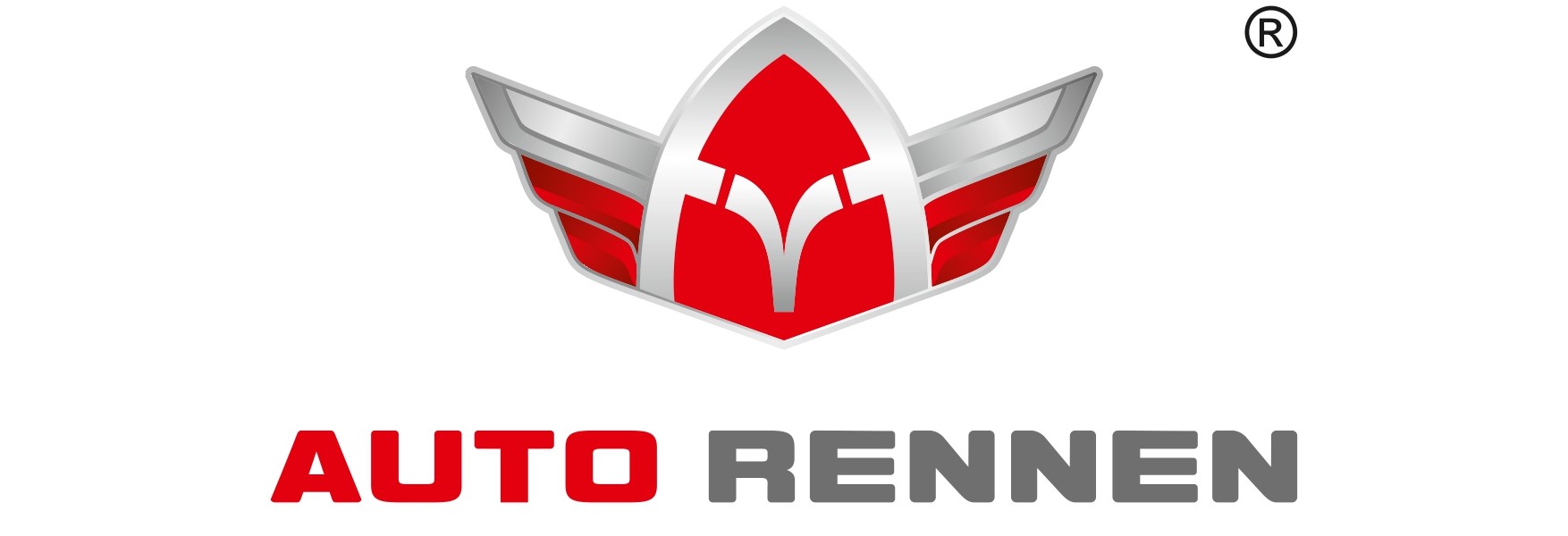- Our products
- Gokart
- Barrier system for rental Go -karting
Tire barrier
Tire barriers are a great safety feature for rental go-kart tracks. They’re typically used to cushion impacts and reduce the risk of injury if a kart goes off course or crashes into a wall. These barriers are often made from used tires stacked or arranged in a way that absorbs energy during a collision; double or triple stacking helps improve energy absorption.
When designing a tire barrier for a go-karting track, it’s important to consider both safety and effectiveness. Here’s what you should keep in mind for a well-constructed tire barrier:
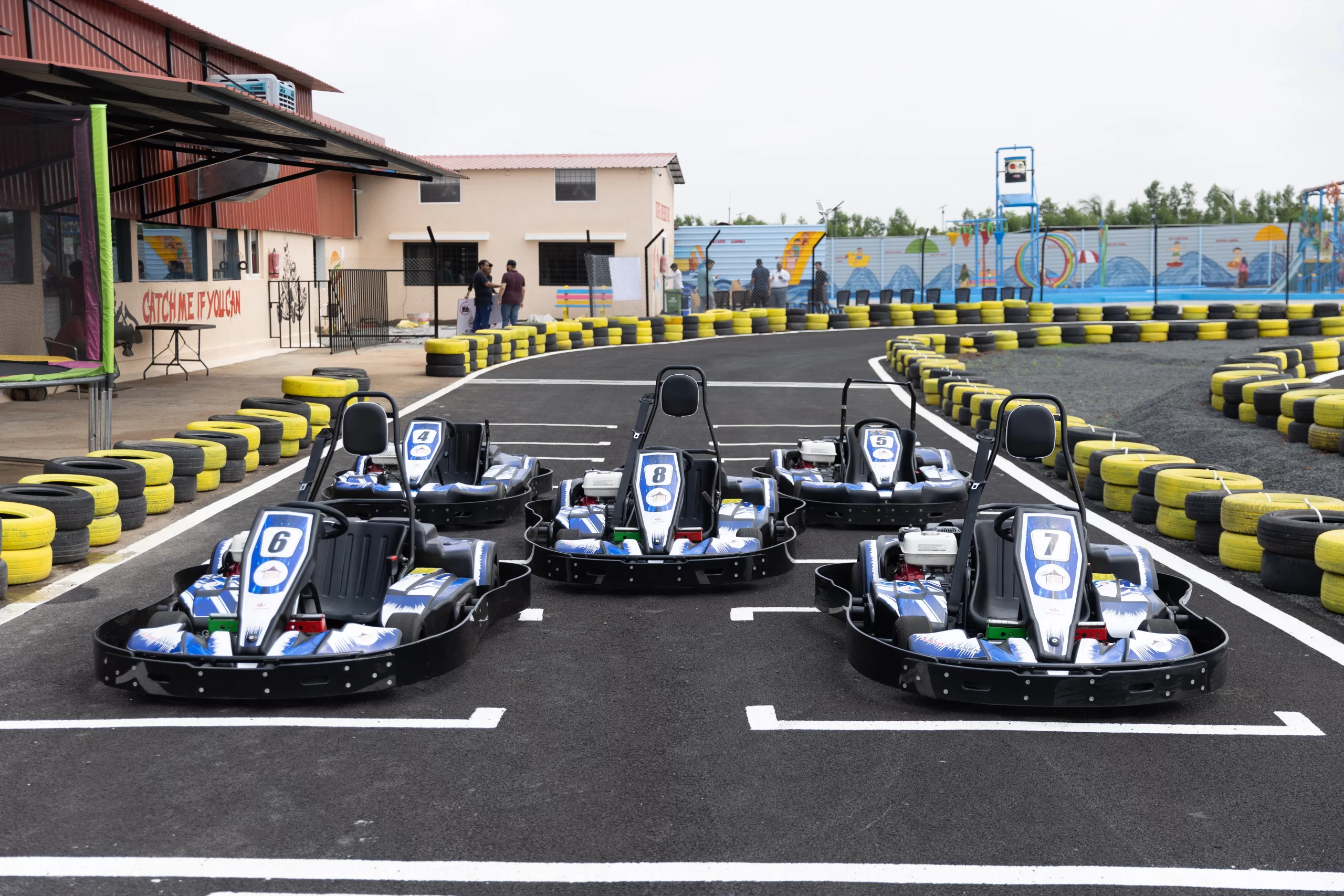
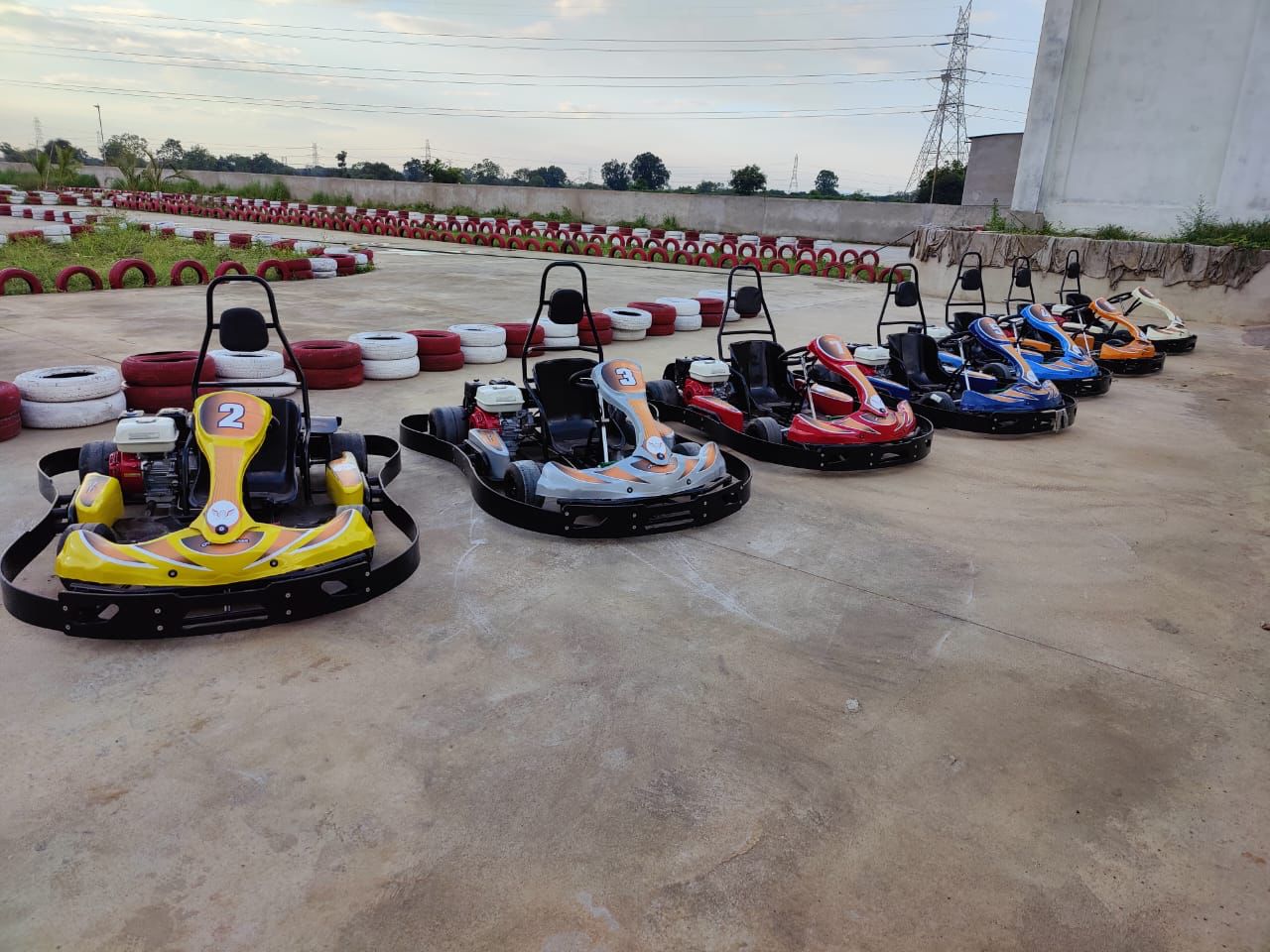
-
 A. Tire Selection
A. Tire Selection
-
 B. Stacking Tires
B. Stacking Tires
-
 C. Barrier Shape
C. Barrier Shape
-
 D. Securing the Tires
D. Securing the Tires
-
 E. Safety Considerations
E. Safety Considerations
-
 F. Maintenance
F. Maintenance
- Used Tires: You can use used tires that are still in good condition. They should be uniform in size to maintain consistency in protection.
- Tire Size: Medium or large-sized tires are preferred. They absorb more impact and provide a softer barrier.
- Stacking Configuration: Tires can be stacked vertically or horizontally depending on the space available and the type of protection needed.
- Single Layer vs. Double Layer:
- For lower speed tracks or areas with less risk of high-impact crashes, a single layer of tires may suffice.
- For higher-speed areas or sections where kart collisions are more likely, double or even triple layers are ideal for better cushioning.
- Tire Placement: Tires should be placed tightly together to prevent gaps where karts could slip through or get caught
- Curved Shape: Try to shape the tire barrier to match the curve of the track. Curved barriers work better than straight ones, as they help deflect impacts rather than stop them abruptly.
- Angle: The angle of the tires should be such that they absorb impacts by rolling slightly, which will reduce the force transferred to the kart and driver.
- Tire-to-Tire Connections: Stack the tires in a way that they interlock with each other. You can use zip ties or strong ropes to connect tires in certain configurations to ensure they stay in place during impact.
- Anchoring to the Ground: Use stakes, bolts, or sandbags around the base to prevent the tires from moving, especially in high-speed zones.
- Impact Absorption: The tires help absorb impact energy, reducing the risk of injury to drivers. Ensure that the tires are positioned in high-risk areas such as corners, barriers, and runoff zones.
- Padding: In some cases, consider placing additional padding or soft material between layers of tires to reduce injury further.
- Regular Inspection: Over time, tires can degrade, so regular inspections are crucial. Replace any tires that have become damaged or worn down to ensure they remain effective.
- Cleanliness: Make sure that the tires do not become too dirty or covered with debris, which could affect their ability to absorb impacts.
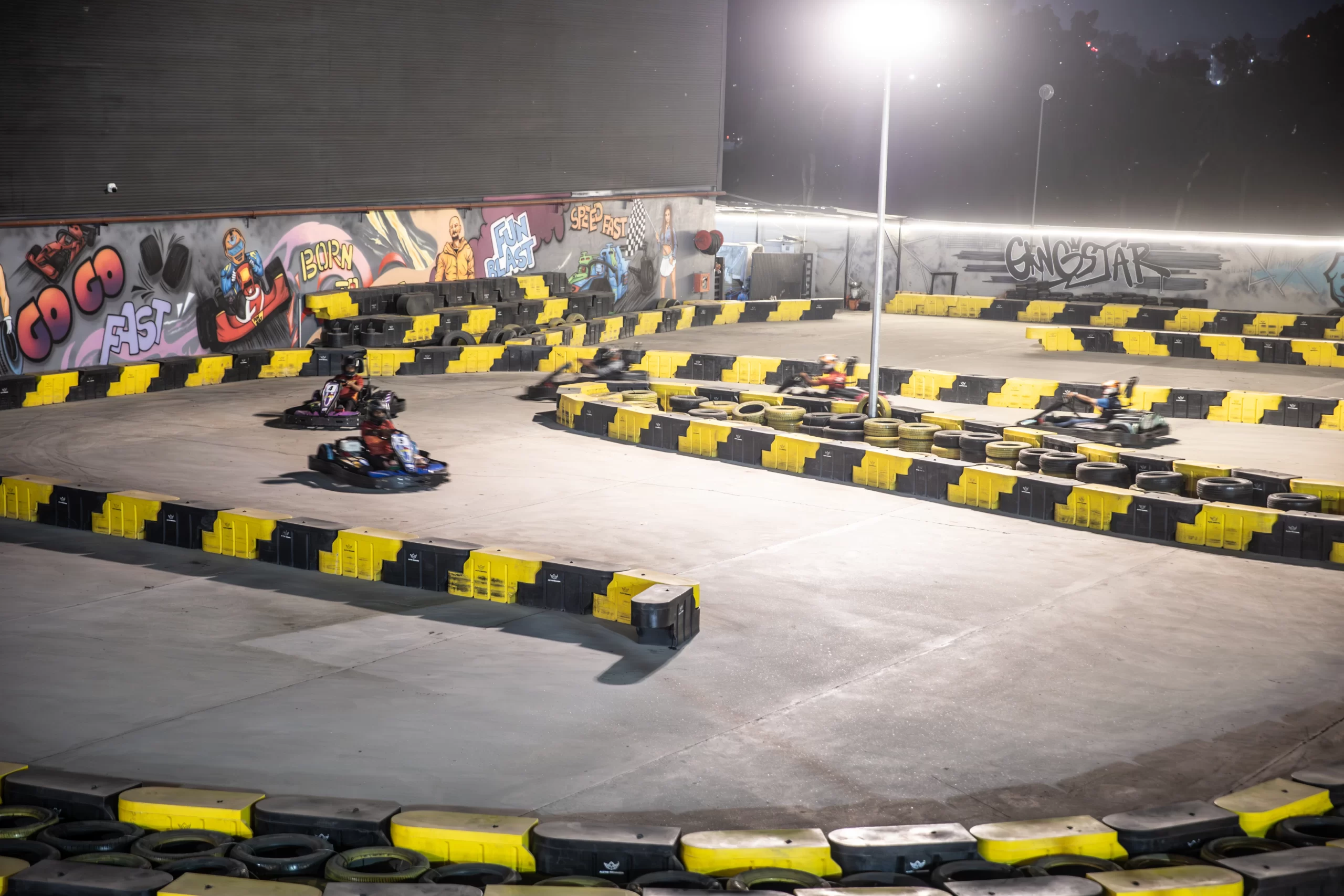
Plastic barrier
Plastic barriers are popular choice for rental go-kart tracks because they are lightweight, durable, these are interlocking barrier system, especially if you’re looking for something easier to maintain or with a more professional appearance. Plastic Barriers are benefitted with durability, Low Maintenance, Safety, Customization, and Aesthetic Appeal
-
 A. Barrier Type
A. Barrier Type
-
 B. Barrier Design
B. Barrier Design
-
 C. Installation
C. Installation
-
 D. Placement of Barriers
D. Placement of Barriers
-
 E. Safety Considerations
E. Safety Considerations
-
 F. Maintenance and Durability
F. Maintenance and Durability
-
 G.Benefits of Plastic Barriers
G.Benefits of Plastic Barriers
- Plastic Wall Barriers (Interlocking): These barriers are commonly made of durable non-breakable plastic like HDPE (High-Density Polyethylene). They come in interlocking sections or single molded pieces, which makes them easy to install and maintain.
- Impact Absorption: Most plastic barriers have a hollow core, which helps in absorbing the impact without transferring it directly to the kart or driver. Some plastic barriers are specifically designed with energy-absorbing technology, making them excellent at reducing injury risks.
- Modular Systems: Many plastic barrier systems are modular, meaning you can adjust the length and shape of the barriers by simply adding or removing sections. This is great for customizing the track and adapting to different corners or straightaways.
- Height and Width: The barriers should be tall enough to prevent karts from jumping over or getting caught. Typically, these barriers are around 1 meter (3.3 feet) high, but you can adjust based on your track needs.
- Curved Design: Some plastic barriers are designed to curve with the track, which is essential for protecting karts around corners. Customizing barriers to the layout of your track helps prevent direct collisions and impacts.
- Anchoring the Barriers: Plastic barriers should be securely anchored to the ground, especially if they are positioned on high-speed sections. You can use stakes, bolts, or sandbags at the base to keep the barriers in place.
- Interlocking Mechanism: Many plastic barriers use interlocking joints, which make assembly and reconfiguration easier. Ensure the sections are tightly connected to prevent any gaps or shifting.
- Track Corners: The most vulnerable areas of a kart track are the corners. Position plastic barriers around sharp turns or any section where karts are likely to spin out or hit the edge of the track.
- Track Edges: Install barriers along the outer edges of the track to prevent karts from veering off course and hitting dangerous obstacles. Ensure the barriers extend far enough to provide a cushion for any kart that might go off-track.
- Runoff Zones: In areas where a kart might need to slow down or stop safely, install plastic barriers that can absorb the kart’s momentum. These areas typically require higher barrier walls.
- Smooth Surface: Plastic barriers typically have smooth, rounded surfaces to reduce the risk of sharp impacts, which could lead to injury. This also helps minimize damage to karts.
- Height & Shape: Ensure the barrier height is sufficient to prevent kart wheels from going over the top. The top of the barrier should be slightly slanted or curved to direct the kart away from the track if there is an impact.
- Weather Resistance: Plastic barriers are often UV-resistant and weatherproof, meaning they can withstand exposure to the elements, such as rain, heat, or cold.
- Regular Inspections: Inspect the barriers regularly for cracks, wear, or damage due to impacts. Replace any damaged sections immediately to ensure continued safety.
- Cleaning: Plastic barriers are easier to clean than tire barriers, so keeping them in good condition requires minimal effort. A regular wash will help maintain visibility and reduce the buildup of dirt or debris.
- Aesthetic: Plastic barriers offer a sleek, professional look and come in a variety of colors to match branding or the theme of your track.
- Low Maintenance: Compared to tire barriers, plastic barriers require less ongoing maintenance and don’t degrade or accumulate dirt and debris.
- Consistent Protection: They provide uniform protection around the track and are effective at deflecting karts without causing damage to the vehicle or driver.
Rubber & Spring barrier
Rubber barriers are excellent choice for go-kart tracks, offering both safety and durability. Metal support plate is fastened in ground with fastener and rubber sheet locked over this covering by special shock absorption sheet, we can add springs also to reduce shocking impact.. These barriers combine the flexibility of rubber with the shock-absorbing properties of springs, offering great impact resistance while maintaining track safety.
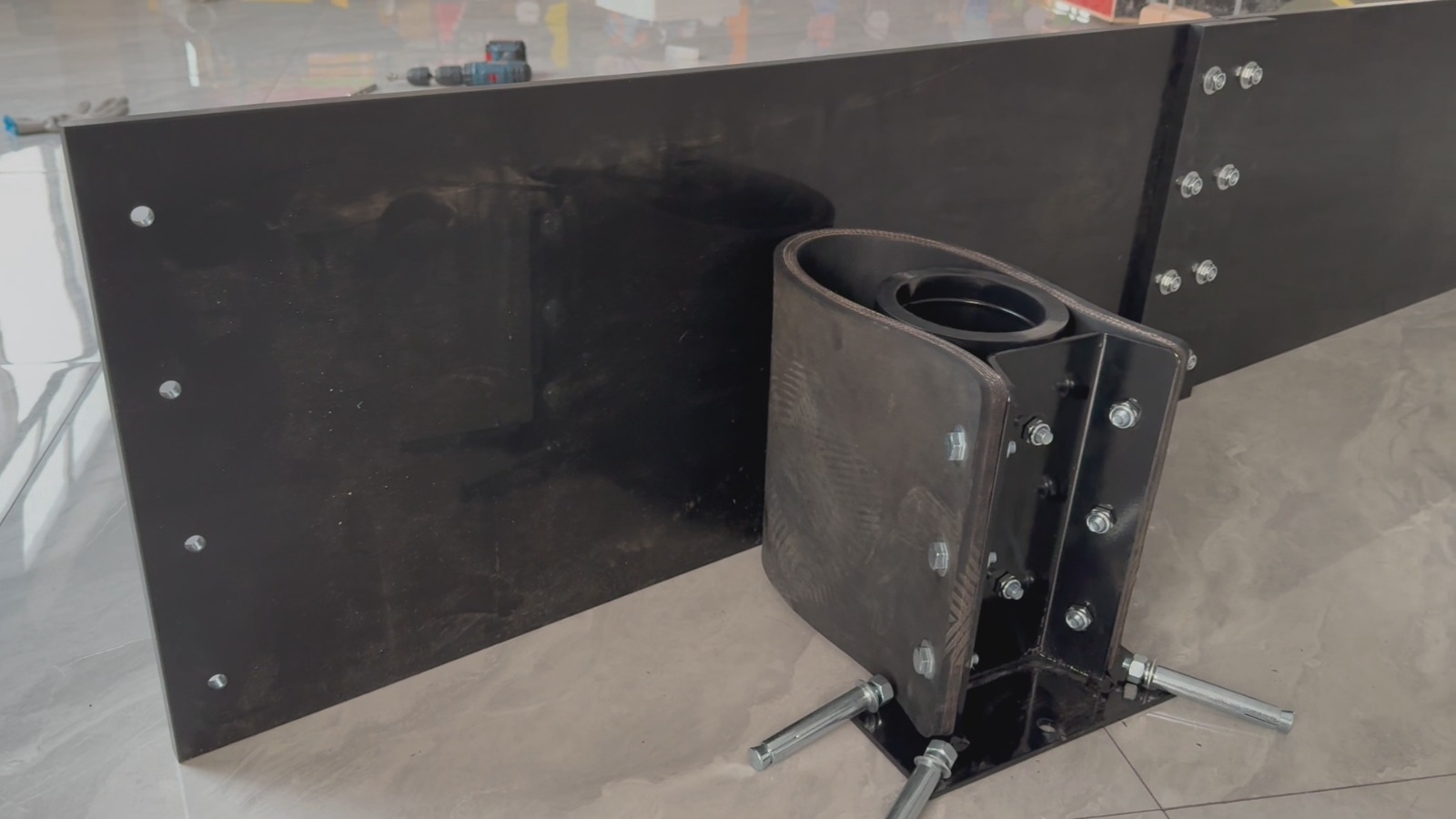
Key Features of Rubber and Spring Barriers
-
 A. Barrier Components
A. Barrier Components
-
 B. Working of the system
B. Working of the system
-
 C. Installation
C. Installation
-
 D. Placement
D. Placement
-
 E. Safety Considerations
E. Safety Considerations
-
 F. Maintenance and Durability
F. Maintenance and Durability
-
 G.Benefits of Rubber and Spring Barriers
G.Benefits of Rubber and Spring Barriers
- Rubber Padding: Rubber elements are used as the outer surface of the barrier. The rubber absorbs and dissipates impact energy, providing a softer, more forgiving barrier compared to rigid barriers.
- Springs: Springs are often used behind the rubber padding to allow the barrier to flex and return to its original shape after being compressed. This gives the barrier a “bounce-back” effect, which can be useful in preventing damage to karts and minimizing the risk of injury.
- Impact Absorption: When a kart impacts the barrier, the rubber absorbs the initial shock, while the springs compress and then rebound, pushing the barrier back into its original position. This helps to cushion the impact while minimizing the force transferred to the kart and driver.
- Flexibility: The combination of rubber and springs allows the barrier to flex outward upon impact, providing a more gradual deceleration for the kart rather than an abrupt stop. This reduces the likelihood of a serious collision.
- Anchoring: The rubber and spring barrier system needs to be securely anchored to the ground to ensure it doesn’t move upon impact. Typically, steel or metal posts are used to anchor the barrier segments in place, while the spring elements are either embedded in the rubber or connected to the posts to allow for flex.
- Interlocking Segments: The segments of rubber and springs are often designed to interlock or connect via bolts or clips to keep the system secure and prevent gaps between the sections.
- Corners and Tight Turns: Rubber and spring barriers are ideal for tight turns and corners, where karts are more likely to lose control or slide off the track. The combination of shock absorption and flexibility provides excellent protection in these areas.
- Track Edges: Place the barriers along the outer edges of the track to prevent karts from veering off and hitting dangerous obstacles. They provide a soft cushion if a kart drifts too far out of the racing line.
- Runoff Zones: In areas where drivers might need to slow down or recover from a spin, rubber and spring barriers provide a safe way to decelerate and absorb the kart’s momentum.
- Reduced Risk of Injury: The rubber’s softness, combined with the spring’s shock-absorbing capabilities, reduces the chances of injury by preventing sudden deceleration and minimizing hard impacts.
- Smooth Surface: The smooth, rounded surface of the rubber helps minimize any sharp edges or harsh impacts, further reducing the risk of injury for the driver.
- Wear and Tear: Over time, rubber barriers may degrade from constant exposure to UV rays and impact. Ensure that the rubber is made from high-quality, UV-resistant materials to withstand the elements and regular collisions.
- Spring Tension: The springs may lose tension over time. Regular inspections are necessary to ensure they still provide the desired amount of flexibility and rebound.
- Cleaning: Rubber barriers are relatively easy to clean with a hose or power washer to remove dirt or debris.
- Excellent Impact Absorption: The combination of rubber and springs offers great shock absorption, minimizing the risk of injury to drivers.
- Flexibility: The flexible nature of the barrier means it will return to its original position after each impact, reducing maintenance.
- Low Maintenance: Compared to tire barriers, rubber and spring barriers require less regular maintenance and are easier to clean.
- Consistent Protection: They offer consistent protection and are not prone to the wear and degradation that tire barriers face over time.



